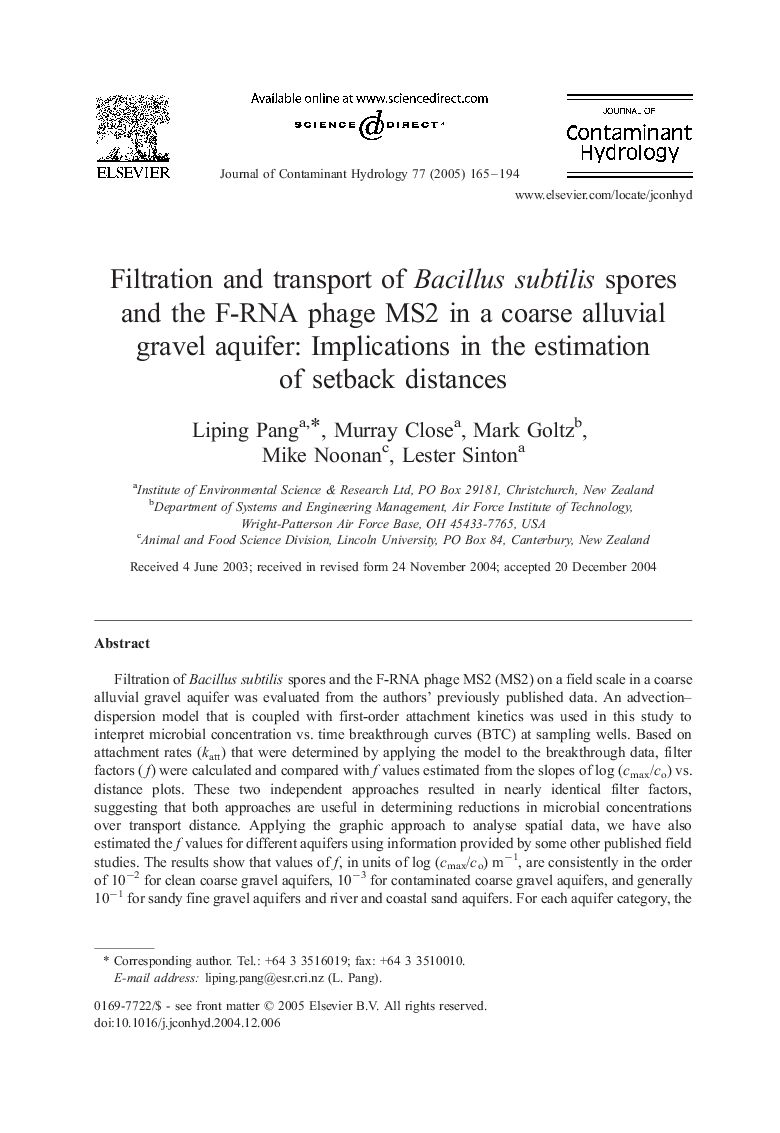| Article ID | Journal | Published Year | Pages | File Type |
|---|---|---|---|---|
| 9482933 | Journal of Contaminant Hydrology | 2005 | 30 Pages |
Abstract
Filtration theory was applied to calculate collision efficiency (α) from model-derived attachment rates (katt), and the results are compared with those reported in the literature. The calculated α values vary by two orders-of-magnitude, depending on whether collision efficiency is estimated from the effective particle size (d10) or the mean particle size (d50). Collision efficiency values for MS-2 are similar to those previously reported in the literature (e.g. DeBorde et al., 1999) [DeBorde, D.C., Woessner, W.W., Kiley, QT., Ball, P., 1999. Rapid transport of viruses in a floodplain aquifer. Water Res. 33 (10), 2229â2238]. However, the collision efficiency values calculated for Bacillus subtilis spores were unrealistic, suggesting that filtration theory is not appropriate for theoretically estimating filtration capacity for poorly sorted coarse gravel aquifer media. This is not surprising, as filtration theory was developed for uniform sand filters and does not consider particle size distribution. Thus, we do not recommend the use of filtration theory to estimate the filter factor or setback distances. Either of the methods applied in this work (BTC or concentration vs. distance analyses), which takes into account aquifer heterogeneities and site-specific conditions, appear to be most useful in determining filter factors and setback distances.
Related Topics
Physical Sciences and Engineering
Earth and Planetary Sciences
Earth-Surface Processes
Authors
Liping Pang, Murray Close, Mark Goltz, Mike Noonan, Lester Sinton,
